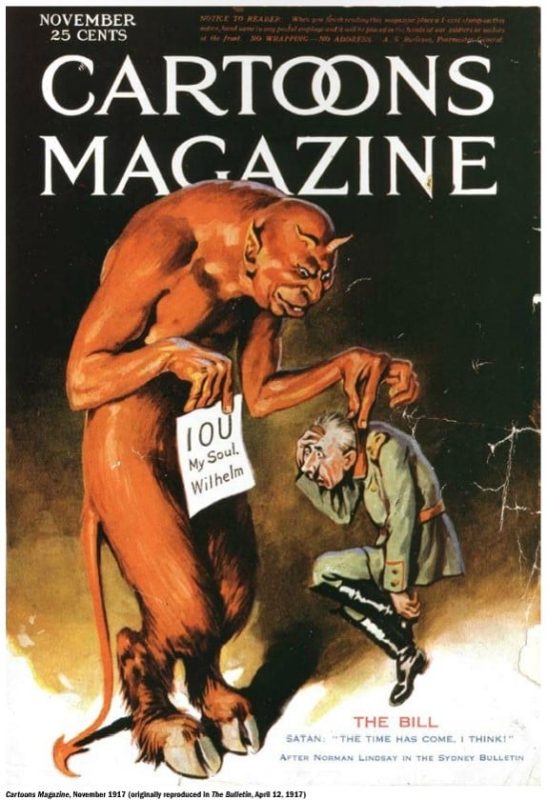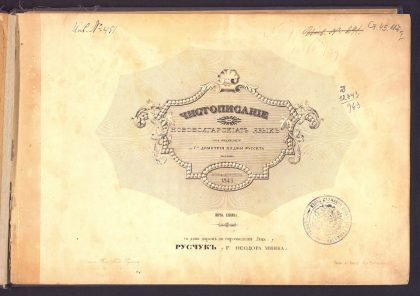
Илюстрация: bg.asayamind.com/world-war-i-posters-that-reveal-roots-modern-propaganda
.
(Short history of WWI propaganda)
by Kamelia Popova*
The First World War (1914-1918) was a time when the so called “engineering of consent” was tested and applied by certain governments. The experiment had a phenomenal success and so the practice continues to this day.
As the German advance into Belgium progressed during the late summer and early fall of 1914, a powerful anti-German propaganda campaign begun to unfold. The campaign reached its peak in November of 1917 when the Allies suffered major losses and for a while it looked like they are about to lose the war.
The British press (quality and tabloid alike), later followed by the European and the American press, was flooded by bizarre accounts of crimes perpetrated by German soldiers in Belgium. These were war crimes such as: gouging out the eyes and cutting off the hands of civilians; raping and sexually mutilating women; bayoneting babies and giving children hand grenades, and the crucifixion of prisoners of war. (Picture 1)

The sensational stories were fabricated by the British government through its newly created War Propaganda Bureau. Its main objectives were as follows: 1) to completely discredit Germany in the eyes of the world; 2) to attract American support for the war, and last but not least 3) to influence the American public and Wilson’s government to join the Allies. (Cynthia Wachtell. „Representations of German Soldiers in American World War I Literature“. 2007.).
Following these objectives the British propaganda crafted several ideological motifs (further developed by the American propaganda after April 1917):
1) Degrading representation of the enemy as a blood thirsty Hun who is barbarous and terrifying, and destroys everything in his path. Images such as “The Mad Brute” evoked fear, rage and hatred (Pictures: 2, 3, 4)

https://www.loc.gov/resource/ppmsca.55871/


https://www.loc.gov/item/96507603/
2) Degrading and humiliating representation of the character and personal qualities of the German emperor Wilhelm II as a wretched creature who had sold his soul to the devil. This image aroused disgust, anger and hatred. (Picture: 5)

3) The “Savior” motif conveyed pride and confidence in the qualities of the Anglo-Saxon race represented as the modern knights fighting for liberty. Other versions played on the sense of guilt associated with not volunteering for service. (Pictures: 6, 7)


4) The “true American” motif re-defined the concept of what it meant to be “100% American” (or English) – one who will always agree and support whatever his government asked and expected of him. (Pictures: 8, 9)


The most notorious British propaganda fabrication was the story about a Canadian soldier who was allegedly crucified with bayonets after the battle of Ypres, Belgium at the end of April 1915. (Picture: 10) The American Times printed the story on May 10, 1915. (Ponsonby, Arthur. „Falsehood in War Time: Containing an Assortment of Lies Circulated Throughout the Nations During the Great War“. 2005.)

Similar fabrications were the stories about: the Belgian nuns tied to the clappers of church bells and crushed to death when the bells were rung, and the story about a Belgian woman pinned to the door of a house by a sword whose body was naked and her breasts had been cut off.
From this point on the war propaganda machine switched to a higher gear.
After the United States joined the war (April 2, 1917), the Wilson administration created the Committee on Public Information (CPI), headed by George Creel. Major role in the Committee was played by Edward Bernays, a member of CPI and Sigmund Freud’s nephew, who would later move on to create the modern profession of Public Relations (PR). Bernays was one of the first to attempt to manipulate public opinion using the subconscious. Using ideas from Trotter’s crowd psychology and the psychoanalytical ideas of his uncle, Bernays felt manipulation was necessary in democracy. His strategy was to apply to practice the “engineering of consent” by manipulating people’s emotions, fears and desires, and thus being able to manipulate the public opinion, and the public behavior. After the war, Bernays moved to apply his ideas to sales and became known as the “father of the modern mass advertising”. (See the 3-part award-winning 2002 documentary by Adam Curtis „The Century of the Self“ (YouTube), which explains in detail how the scheme was conducted.)
It must be underlined here that at by April 2, 1917, the American public was deeply divided about the war. Most Americans did not see why the U.S. should become entangled in “European affairs” and did not support Wilson’s decision.
Enlisting academics, journalists, artists and advertising men, the CPI flooded the country with pro-war propaganda, using every available medium from pamphlets to posters, newspaper ads and motion pictures. It trained and dispatched 75,000 Four-Minute men to deliver speeches (sometimes in different languages: Yiddish, Italian etc.) to audiences all over the country. (Eric Foner, „Give me liberty”, 2017.) Hollywood actors and actresses like Charlie Chaplin, Mary Pickford and Douglas Fairbanks participated happily. (See the American Experience documentary„The Great War 1918” by Tom Weidlinger).
An army of distinguished historians and scholars was asked to prepare propaganda booklets and pamphlets (75 million copies were printed). One title, How the War Came to America, enjoyed a fantastic distribution of 7 million copies. In March 1918, Professor J. S. P. Tatlock from Stanford wrote a pamphlet entitled Why America Fights Germany, which boasted a circulation of about 750,000 copies. (Kennedy, David M., Bailey, Thomas A. The American Spirit. Boston: Houghton Mifflin Company, 2006. Volume II. Picture: 11). Tatlock’s pamphlet is studied today at the universities as an example of mass mind manipulation tool.

CPI’s massive domestic propaganda campaign was accompanied by general repression and harassment of people either opposed to American entry into the war or of German heritage. Persecution was directed at all opponents of war and especially all left wing organizations and unions. German immigrants became easy targets. German language was banned in schools. Some cities even banned the performance of German classical music. In 1917 the New York Metropolitan opera banned all productions by German composers. (J. E. Vacha, When Wagner Was Verboten: The Campaign against German Music in World War I”. Cornell University Press, 1983). The Pittsburgh Orchestra Association banned “all music written by any German composer, and all music composed by a subject of any of Germany’s allies”. (Pittsburgh Bans Beethoven! Pittsburgh Gazette, March 2007). The government jailed Karl Muck, the director of the Boston Symphony and a Swiss citizen, as an enemy alien after he insisted on including the works of German composers like Beethoven in his concerts. (Eric Foner, „Give me liberty”, 2017.)
Popular words of German origin were changed: “sauerkraut” was renamed to “liberty cabbage”, “hamburger” became “liberty sandwich, and the „frankfurters” (later known as “hot-dogs”) became “liberty sausage”.
Civil liberties in the United States were further assaulted by the Espionage Act (June 1917) and a new Sedition Act (1918). The last one threatened a 21 years prison term to anyone who expressed disloyalty. The most notorious victim of the Espionage Act was Eugene Debs who was sentenced to 10 years in prison for having given an antiwar speech.
Never before an agency of the federal government attempted the “conscious and intelligent manipulation” of its own people. Even though it was dissolved later, the CPI’s activities proved that IT WAS POSSIBLE to “sway the ideas of whole populations, change their habits of life, and create belief, practically universal in any policy or idea.” But the CPI also set a precedent for government efforts to shape public opinion in later international conflicts, from World War II to the Cold War and Iraq. (Eric Foner, „Give me liberty”, 2017.)
.
––––––––––––––––––––––––––––––––––––––––––
* The author is a professional historian. She has taught American history at the College of DuPage for 13 years.
.



